A to Z Glossary of Definitions and Terms Used in the National Building Regulation Code of Practice
Every industry has terms and definitions that are specific to that industry, and the building industry is no exception. These Building Regulation definitions form part of the National Building Regulations and Building Standards Act (Act 103 of 1977 that has been amended several times, most recently in 2008).
Note that every individual Standard in SANS 10400, which form a body of knowledge that shows those in the industry how to apply the South African Building Regulations, has its own bank of definitions at the beginning of the Standard. Many of these are the same as those published as part of the legislation.
All the individual Standards that form part of SANS 10400: The application of the National Building Regulations, also have a list of additional Standards (both South African and international) that are relevant to that part, and need to be taken into account during the building process.
>
>
>
A
“absorption field” An on-site effluent system, such as a french drain or evapo-transpirative bed;
“acceptable”, “adequate” or “satisfactory“ means acceptable, adequate or satisfactory –
(a) in the opinion of any local authority; or
(b) in relation to any document issued by the council, in the opinion of the council;
“access” An approach, entry or exit;
“accessible” The characteristic of a building, that can be reached, entered and used;
NOTE Accessibility is evaluated in terms of the safe, comfortable and convenient use of the site, building or facility by persons with disabilities.
“accessible building” A building that complies with the requirements of part of SANS 10400-S:2011;
“accessible route” The walking space that complies with the requirements of part of SANS 10400-S:2011;
“access door” means an entrance door to an emergency route;
“accredited certification body” The certification body that has been accredited by a government-endorsed accreditation body;
“accredited testing laboratory” A laboratory that has been accredited by the South African National Accreditation System (SANAS);
“action” means an assembly of concentrated or distributed mechanical forces acting on a building or the cause of deformations imposed on the building or constrained in it;
“adequate” Adequate
a) in the opinion of any local authority, or
b) in relation to any document issued by the council, in the opinion of the council;
“agrément certificate” means a certificate that confirms fitness-for-purpose of a non- standardised product, material or component or the acceptability of the related non-standardised design and the conditions pertaining thereto (or both) issued by the Board of Agrément South Africa;
“air conditioning system” means a system of mechanical ventilation where air that has been cleansed is supplied to a building under conditions of controlled temperature, humidity, distribution and movement;
“air duct” means any pipe, tube, conduit or enclosed space used or to be used in any building for the transmission of air in an artificial ventilation system;
“applicant” means any person who makes an application;
“application” means an application contemplated in section 4 of the Act;
“approval” means –
(a) approval by any local authority, including approval contemplated in section 7(7)(b) of the Act; or
(b) approval by the review board on appeal to the review board in terms of the Act;
“approved” means-
(a) approved by any local authority; or
(b) approved by the review board on appeal to the review board in terms of the Act;
“artificial ventilation system” means a system in which air is caused to circulate through a room by means of a mechanical apparatus which forces air into or extracts air from such room;
“articulation joint” A joint in masonry provided at suitable locations and intervals, that takes cognizance of the lateral stability and structural integrity of individual panels, and that enables wall panels to move in harmony with their supports without developing significant damage;
“automatic” in relation to fire-doors, fire-shutters, fire-dampers, fire-alarms, or fire extinguishing equipment means fitted with an approved device which is activated by a predetermined amount of heat, smoke, combustion gases or flame without the need for any manual operation;
B
“backflow” means the flow of water in any pipe in a direction opposite to the normal direction of flow;
“back siphonage” means the backflow of water resulting from negative pressure in a water installation or in the water supply system;
“back vent” means a ventilating pipe connecting a branch discharge pipe, to which unvented fixture discharge pipes are connected, to a vent stack or to a stack vent;
“balustrade wall” means a wall serving the purpose of a balustrade;
“basement storey/basement” Any part of a building which is below the level of the ground storey;
“batten” A small section timber member, fixed parallel to the line of the eaves, at right angles to the rafters, and onto which tiles or slates are fixed;
“bearing” The structural support, usually a wall, positioned under the top chord or bottom chord or between the end points of a roof truss, beam or rafter;
“bed joint” The horizontal mortared joint between courses of masonry;
“block” means any masonry unit which has a length of more than 300 mm or a width of more than 130 mm;
“bond block” A masonry unit which is manufactured or modified on site to accommodate horizontal reinforcement within the depth of the unit;
“Board of Agrément” is the body that operates under the delegation of authority of the Minister of Public Works;
“branch discharge pipe” means a horizontal discharge pipe conveying the discharge from one or more sanitary fixtures to a discharge stack;
“branch drain” means any drain which discharges into a main drain;
“branch vent” means a horizontal ventilating pipe connecting two or more trap vents to a vent stack or to a stack vent;
“brandering” A small section timber member which is usually fixed to the underside of a truss chord to support a fixed ceiling;
“brick” means any masonry unit which is not a block;
“brickforce” A light, welded steel fabric that comprises two hard-drawn wires of diameter not less than 2,8 mm and not more than 3,55 mm, held apart by either perpendicular (ladder-type) or diagonal (truss-type) cross wires
NOTE Ladder-type brickforce usually has a main wire diameter that does not exceed 3,15 mm and is supplied
in rolls. Truss-type brickforce usually has a diameter of 3,55 mm and is supplied flat;
“building” includes:
a) any structure, whether of a temporary or permanent nature, and irrespective of the materials used in the erection thereof, erected or used in connection with
1) the accommodation or convenience of human beings and animals;
2) the manufacture, processing, storage, display or sale of goods;
3) the rendering of a service;
4) the destruction or treatment of refuse or other waste materials; and
5) the cultivation or growing of plants or crops;
b) a wall, swimming bath, swimming pool, reservoir or bridge or any structure connected therewith;
c) a fuel pump or tank used in connection therewith;
d) any part of a building, including a building as defined in (a), (b) or (c); and
e) any facilities or system, or portion thereof, within or outside but incidental to a building, for the provision of a water supply, drainage, sewerage, stormwater disposal, electricity supply or other similar service in respect of the building;
“building component” part of a building other than a building element;
“building element” wall, floor, foundation or roof of a building;
“building envelope” The elements of a building that separate a habitable room from the exterior of a building or a garage or storage area;
“building height” means the dimensional height in metres measured from the lowest ground level abutting any part of the building to the level of –
(a) the underside of a flat roof; or
(b) the underside of the roof of any plant room on such flat roof where the plan area of the plant room is more than 10% of the area of such flat roof; or
(c) a horizontal ceiling which is immediately under any pitched roof; or
(d) half-way between the eaves level and the ridge of any pitched roof where there is no ceiling below such roof or where the ceiling follows the pitch of such roof;
“building line” in relation to a site, means a line prescribed in any town planning scheme or any other law designating the boundaries of the area of the site outside of which the erection above ground of any building is prohibited;
C
“capacity” of any storage tank means the volume of such tank between the operating level of the water contained in such tank and the invert of the outlet from the tank;
“carport” means a building intended to provide shelter for a motor vehicle, caravan or boat and having a roof but having walls on not more than two sides;
“category 1 building” A building which
a) is designated as being of class A3, A4, F2, G1, H2, H3, or H4 occupancy (see Regulation A20 in annex A),
b) has no basements,
c) has a maximum length of 6,0 m between intersecting walls or members providing lateral support, and
d) has a floor area that does not exceed 80 m2
NOTE 1 Table C.1 outlines the difference in performance between category 1 buildings and other buildings that have the same occupancy designation in respect of a number of building attributes.
NOTE 2 A building may be classified as a category 1 building for the purposes of one or more parts of SANS 10400. Additional limitations may accordingly be imposed on category 1 buildings. For example, a category 1 building in terms of SANS 10400-T (Fire protection) will be restricted to a single storey.
NOTE 3 Fire requirements for category 1 buildings are based on occupants escaping quickly from buildings. The design population for occupancies as set out in table 2 of part A of the Regulations (see annex A) should therefore not be exceeded.
“ceiling” The upper interior surface of a room or similar compartment, including all materials comprising such surface;
“certified thermal calculation software” Software that is certified by the Board of Agrément South Africa, in terms of Agrément South Africa’s Energy Software Protocols, as being fit for thermal modelling or calculation purposes in terms of the National Building Regulations;
“chemical closet/toilet” means a closet/toilet with a fixed pan, the excreta from which pass into a tank where they are acted upon by chemicals which sterilize and break them down;
“chimney” means that part of a building which forms part of a flue, but does not include a flue pipe;
“chord” A main member that forms the outline of a truss;
“circulation space” The unobstructed area, for a minimum height of 2,1 m above finished floor level, within and around buildings, elements, fixtures and fittings required for movement into and within buildings;
“class 1 aggregate” Coarse aggregate of foamed slag, blast-furnace slag, pumice, burnt clinker, crushed limestone, crushed dolomite, crushed masonry unit or crushed burnt clay product;
“class 2 aggregate” Coarse aggregate of gravel or crushed natural stone other than limestone or dolomite;
“cleaning eye” means any access opening to the interior of a discharge pipe or trap provided for the purposes of internal cleaning, and which remains permanently accessible after completion of the drainage installation;
“clear opening width” The clear open space of an open door through which the user of a building passes
NOTE Clear opening width is not the same as the door width, as it also accounts for the thickness of the door, and any obstructions caused by door furniture on the door, or obstructions such as doorstops fixed to the floor or walls;
“clear span” The horizontal distance between the opposite faces of supporting walls;
“combustible” Is not classified as non-combustible when tested in accordance with SANS 10177-5;
“common drain” means that portion of a drain which conveys sewage other than or in addition to that sewage which emanates from the site through which such drain runs;
“common path of travel” The part of an escape route that leads to only one exit door, access door or escape door;
“communication pipe” means any pipe in a water supply system to which any water installation is connected;
“competent person” means a person who is qualified by virtue of his education, training, experience and contextual knowledge to make a determination regarding the performance of a building or part thereof in relation to a functional regulation or to undertake such duties as may be assigned to him in terms of these regulations;
“competent person” (built environment) A person who
a) is registered in terms of the Engineering Profession Act, 2000 (Act No. 46 of 2000), as either a Professional Engineer or a Professional Engineering Technologist, or
b) is registered in terms of the Architectural Profession Act, 2000 (Act No. 44 of 2000), as a Professional Architect or a Professional Senior Architectural Technologist, and
c) is generally recognized as having the necessary experience and training to undertake rational assessments or rational designs in the field of roofs and roofing;
“competent person” (civil engineering) A person who
a) is registered in terms of the Engineering Profession Act, 2000 (Act No. 46 of 2000), as either a Professional Engineer or a Professional Engineering Technologist,
b) has a tertiary qualification (degree or diploma) in civil engineering, and
c) is generally recognized as having the necessary experience and training to undertake rational assessments or rational designs in the field of civil engineering;
“competent person” (engineering geology) A person who is registered as a Professional Natural Scientist in terms of the Natural Scientific Professions Act, 2003 (Act No. 27 of 2003), and has a BSc (Hons) degree or higher qualification in engineering geology;
“competent person” (environmental access) A person who is
a) registered in terms of the Architectural Profession Act, 2000 (Act No. 44 of 2000), as either a Professional Architect, Professional Senior Architectural Technologist or a Professional Architectural Technologist, and has suitable contextual knowledge and experience to undertake a rational design or rational assessment in terms of the requirements of part S of the Regulations; or
b) generally recognized as having the necessary experience and qualifications to undertake a rational assessment and advise a Professional Architect, Professional Senior Architectural Technologist or Professional Architectural Technologist registered in terms of the Architectural Profession Act, 2000 (Act No. 44 of 2000), on a rational design in terms of the requirements of part S of the Regulations;
“competent person” (fire engineering) A person who
a) is registered in terms of the Engineering Profession Act, 2000 (Act No. 46 of 2000), as either a Professional Engineer or a Professional Engineering Technologist, and
b) is generally recognized as having the necessary experience and training to undertake rational assessments or rational designs in the field of fire engineering;
“competent person” (glazing) A competent person who is recognized by an institute, which has specialist expertise in the field of glazing, as generally having the necessary experience and training to determine glazing requirements in accordance with the requirements of SANS 10137;
“competent person” (mechanical engineering) A person who
a) is registered in terms of the Engineering Profession Act, 2000 (Act No. 46 of 2000),
b) has a tertiary qualification (degree or diploma) in mechanical engineering, and
c) is generally recognized as having the necessary experience and training to undertake rational assessments or rational designs in the field of lighting and ventilation;
“competent person” (sanitation) A person who
a) is registered in terms of the Engineering Profession Act, 2000 (Act No. 46 of 2000), as either a Professional Engineer or a Professional Engineering Technologist, and
b) has a tertiary qualification (degree or diploma) in either civil or mechanical engineering, and
c) is generally recognized as, or can furnish acceptable proof of, having the necessary experience and training to undertake rational assessments or rational designs in the field of sanitation;
“competent person” (wet services) A person who
a) is registered in terms of the Engineering Profession Act, 2000 (Act No. 46 of 2000), as either a Professional Engineer or a Professional Engineering Technologist,
b) has a tertiary qualification (degree or diploma) in civil engineering or mechanical engineering, and
c) is generally recognized as having the necessary experience and training to undertake rational designs in the field of wet services;
“connecting sewer” means a pipe vested in the local authority which connects a drain to a sewer;
“conservancy tank” means a covered tank used for the reception and temporary retention of sewage and which requires emptying at intervals;
“consumer” means any person who is obtaining a supply of water from the local authority;
“contaminated land” means any land that, due to substances contained within or under it, is in a condition that presents an unacceptable risk to the health and safety of occupants of buildings constructed on such land;
“council” means the Council of the South African Bureau of Standards;
“cross vent” means a ventilating pipe connecting a discharge stack to a vent stack;
D
“dark room” means any room used for the purposes of handling or processing light sensitive material;
“dead end” An area from which escape is possible in one direction only;
“dead-end corridor” means any corridor along which it is possible to travel only in one direction in order to reach a feeder route or emergency route;
“dead load” means the gravitational force caused by the static mass of all permanent parts of a building;
“deemed-to-satisfy provision” means non-mandatory requirement, the compliance with which ensures compliance with a functional regulation;
“deemed-to-satisfy rule” (or rule) means a non-mandatory provision which describes a method of design or construction that is deemed to comply with a particular functional regulation;
“depth of water seal” The quantity of water that would have to be removed from a fully charged trap before gases and odours at atmospheric pressure could pass through such trap;
“detached” Built separately as opposed to being attached horizontally with a common wall;
“developed length” of any pipe means the length between two specified points on such pipe measured along the centre line of such pipe, including any bend, junction or similar fitting;
“discharge pipe” means a pipe which conveys the discharge from a sanitary fixture to a drain, and includes a soil pipe, a waste pipe, a discharge stack, a branch discharge pipe or a fixture discharge pipe;
“discharge stack” means any vertical discharge pipe which conveys the discharge from two or more sanitary fixtures and which are connected directly to a drain;
“division” means a portion of a building separated from the remainder of such building by one or more separating elements;
“division wall” means an internal wall that separates one division from another division in any building and that has a fire resistance of not less than that required by these regulations;
“dolomite land” means land underlain by dolomite or limestone rock directly or at a shallow depth less than:
(a) 60 m in areas underlain by limestone;
(b) 60 m in areas underlain by dolomite where no de-watering has taken place and the local authority has jurisdiction, is monitoring and has control over the groundwater levels over the areas under consideration; or
(c) 100 m in areas underlain by dolomite where de-watering has taken place or where the local authority has no jurisdiction or control over ground water levels;
“domestic effluent” means sewage consisting of soil water or waste water or a combination of both;
“drain” means that part of any drainage installation outside a building and which is below ground level, but shall not include the following –
(a) any discharge pipe;
(b) that portion of a discharge stack which is below ground level;
(c) the bend at the foot of a discharge stack;
“drainage installation” means any installation vested in the owner of a site and which is situated on such site and is intended for the reception, conveyance, storage or treatment of sewage, and may include sanitary fixtures, traps, discharge pipes, drains, ventilating pipes, septic tanks, conservancy tanks, sewage treatment works, or mechanical appliances associated therewith;
“drencher system” means an approved system of piping and outlets which, when actuated manually or by the action of fire, releases a continuous curtain of water;
“drip”, (noun) A step or groove formed at the underside of a roof slab overhang parallel to the edge of the slab;
“dwelling house” means a single dwelling unit and any garage and other domestic outbuildings thereto, situated on its own site;
“dwelling unit” means a unit containing one or more habitable rooms and provided with adequate sanitary and cooking facilities;
E
“easy-to-use” The description of a fixture or fitting that has been designed and fitted in such a way that persons with disabilities are able to use it safely, comfortably and conveniently, both in terms of the mechanism used for its operation and the force required to operate it;
“electrical sanitary fixture” means a device which is connected to an electricity supply and to a water supply to perform a function such as the washing of clothes or dishes, or rendering waste matter suitable for disposal into a discharge pipe and includes a food-waste disposer, and a sanitary-towel disposer;
“emergency route” means that part of an escape route which provides fire protection to the occupants of any building and which leads to an escape door;
“entrance” Any access point to a building or portion of a building or facility, used for the purposes of entering.
NOTE An entrance includes the approach walk, thev ertical access leading to the entrance platform, the entrance platform itself, vestibule if provided, the entry door or gate, and the hardware of the entry door or gate.
“equipment” All control devices and components of systems other than appliances which are not permanently installed and integrated for the express purpose of providing control of environmental conditions for the building;
“escape door” means that door in an escape route which, at ground level, leads directly to a street or public place or to any approved open space which leads to a street or public place;
“escape route” means the entire path of travel from the furthest point in any room in a building to the nearest escape door and may include an emergency route;
“evapo-transpirative bed” means an effluent disposal system comprising a shallow sand-filled excavation covered with top soil and planted over with suitable vegetation;
“exit door” means any door that is a component of an escape route from any room;
F
“fall” The slope of a roof;
“feeder route” means that part of an escape route which allows travel in two different directions to the access doors to at least two emergency routes;
“fenestration” Any glazed opening in a building envelope, including windows, doors and skylights;
“fenestration area” An area that includes glazing and framing elements that are fixed or movable, and opaque, translucent or transparent;
“fire-damper” means an automatic damper and its assembly that complies with the requirements contained in SANS 193;
“fire-door” or “fire-shutter” means an automatic or self-closing door or shutter assembly especially constructed to prevent the passage of fire for a specific length of time;
“fire installation” means any water installation which conveys water solely for the purpose of fire-fighting;
“fire load” means the sum of the heat energy values of all combustible materials, including combustible partitions and other exposed combustible elements, contained in a compartment or division;
“fire resistance” means the shortest period for which a building element or component will comply with the requirements for stability, integrity and insulation when tested in accordance with SANS 10177-2;
“fire-stop” means a draft tight barrier or seal placed within or between building elements in shafts, voids and other concealed spaces to retard the spread of flame, heat or smoke;
“fixture branch” means a horizontal fixture discharge pipe;
“fixture discharge pipe” means a discharge pipe which conveys the discharge from a single sanitary fixture;
“fixture unit” means an arbitrary unit of measure for expressing the hydraulic loading on a drainage installation;
“fixture unit rating” means the value in fixture units assigned to a sanitary fixture from a consideration of the duration of its discharge, the interval between discharges and its mean discharge rate;
“flammable” means having a closed cup flash point lower than 90 °C;
“flat roof” A roof with a slight fall which is designed and constructed to allow rainwater to be shed by gutters, outlets or to the perimeter of the roof;
“flight” That part of a stairway which consists of consecutive steps between landings;
“floor area” in relation to a building or a storey thereof, means the total area enclosed within its external walls, exclusive of the area occupied by any lift shaft;
“floor drain” A pipe fitting into which waste water from the floor is discharged and that is normally connected to a branch discharge pipe, which conveys such discharge to a gully, a discharge stack or an open channel;
“floor joist” Is a horizontal beam which is the primary structural member in the construction of a timber floor;
“flooring board” A board of face side width not less than 50 mm and not more than 140 mm, which may be tongued on the one edge and grooved on the opposite edge;
“flight” means that part of a stairway which consists of consecutive steps;
“flue” means a passage which conveys the discharge of a heat generating appliance to the external air;
“flue pipe” means a pipe forming a flue but does not include a pipe built as a lining into a chimney;
“flush finish” The finishing of two adjacent surfaces in such a way that they provide no vertical or horizontal gap, gradient or camber that might affect the safe, comfortable and convenient passage of persons with disabilities;
“foundation” means that part of a building which is in direct contact with and is intended to transmit loads to the ground;
“foundation wall” means that portion of a wall between the foundation and the lowest floor above such foundation;
“free-standing wall” means a wall, not being a retaining wall, without lateral support;
“french drain” means a trench filled with suitable material which is used for the disposal of liquid effluent from a septic tank or waste water;
“functional regulation” means a regulation that sets out in qualitative terms what is required of a building or building element or building component in respect of a particular characteristic without specifying the method of construction, dimensions or material to be used;
G
“garage” means an enclosed area which is used or intended to be used for the parking, storing, servicing or repairing of motor vehicles;
“gauge pressure” The amount by which the pressure exceeds the atmospheric pressure;
“general installation” means any water installation which conveys water for any purpose other than fire-fighting;
“geotechnical site investigation” the process of evaluating the geotechnical character of a site in the context of existing or proposed works or land usage, which may include one or more of the following:
(a) evaluation of the geology and hydrogeology of the site;
(b) examination of existing geotechnical information pertaining to the site;
(c) excavating or boring in soil or rock and the systematic description of the soil and rock profiles;
(d) determining the depth of any fill that might be present;
(e) in-situ assessment of geotechnical properties of materials;
(f) recovery of samples of soil or rock for examination, identification, recording, testing or display;
(g) testing of soil or rock samples to quantify properties relevant to the purpose of the investigation;
(h) evaluation of geotechnical properties of tested soils; and
(i) reporting the results;
“glazing” Glass, plastics and organic coated glass fixed in frames in windows, doors and roof lights, or that form doors;
“going” means the distance (measured on plan) between the nosing of a tread and the nosing of the tread or landing next above it;
“grab rail” A rail used as a support to transfer a person on or off a toilet, or to assist with other functions;
“grey water” Domestic waste water excluding toilet water;
“gully” means a pipe fitting incorporating a trap into which waste water is discharged;
H
“habitable room” means a room used or designed, erected, adapted or intended to be used by persons for sleeping in, living in, the preparation or consumption of food or drink, the transaction of business, the rendering of professional services, the manufacture, processing or sale of goods, the performance of work, the gathering together of persons or for recreational purposes;
“handrail” A rail used in circulation areas, such as corridors, passageways, ramps or stairways, to assist continuous and safe movement;
“heel joint” The position on a truss at which the top chords and bottom chords intersect, or where the first vertical web intersects with the bottom chord in stub-ended trusses;
“height” means building height;
“high risk substance” means any substance listed in the schedule to the Administrative Regulations, as amended, made in terms of the Machinery and Occupational Safety Act, 1983 (Act 6 of 1983);
“horizontal” in relation to a discharge pipe or ventilating pipe, means inclined at less than 45° to the horizontal;
I
“impaired” A lower than generally accepted optimum performance in a human ability, which might be a temporary or permanent condition;
“impairment” Is indicative of any one impaired ability;
“imposed load” means any force assumed in the design of any building, caused by the intended occupancy thereof or by earth pressure, snow, hail, groundwater or the pending of rainwater;
“industrial effluent” means any liquid whether or not containing matter in solution or suspension which is given off in the course of or as a result of any industrial, trade, manufacturing, mining or chemical process or any laboratory, research or agricultural activity, and includes any liquid other than soil water or stormwater;
“inspection” means the general inspection by a competent person of a system or measure or installation of a building, or part thereof, at such intervals as might be necessary in accordance with accepted professional practice to enable such competent person to be satisfied that the design assumptions are valid, the design is being correctly interpreted and the work is being executed generally in accordance with the designs, appropriate construction techniques and good practice but shall exclude detailed supervision and day-to-day inspection;
“inspection chamber” means a chamber not deeper than 750 mm and of such dimension that access may be obtained to a drain without requiring a person to enter into such chamber;
“inspection eye” means any access opening to the interior of any pipe or pipe fitting in a drainage installation provided solely for the purpose of inspection and testing, and to which permanent access after completion of the drainage installation need not be provided;
“interceptor” A device that
a) is designed to cool down incoming hot waste water to below 30 °C to enable grease and fat to separate from the water and to solidify or be collected on the surface level of the waste water, and that prevents grease and fat from entering a sewer; or
b) separates and stores light liquid hydrocarbons from effluent water and stormwater, to prevent the light liquids from entering a sewer;
“interconnected complex” A complex of multiple dwelling units, such as terraced or multi-storey complexes, or cluster or retirement-village-type developments (or both), where management of common property usually resides with (but is not limited to) a management body;
L
“laminated glass” means two sheets of ordinary annealed glass bonded to a shear and impact resistant plastic interlayer;
“laminated toughened glass” means a laminated glass where one or both sheets of ordinary annealed glass are replaced by a sheet or sheets of toughened glass;
“landing” means a platform between two consecutive flights of a stairway;
“lapa” Thatched roof building which is used for recreational purposes and has either no walls or non-combustible walls;
“lateral boundary” means a boundary of a site other than a boundary between such site and any street or public place with a width of more than 6 m measured at right angles to such boundary;
“light liquid” A liquid of a lower density than water, that is insoluble or only slightly soluble or only very slightly soluble in water, is non-saponifiable and non-polar (for example, naphthous oils, lubricating oils, diesel and fuel oils (but excluding emulsions and vegetable and animal fats and oils));
“light reflectance value” – LRV The measurement, using a spectrophotometer, of the light reflected from a surface in standard conditions;
NOTE It is expressed on a scale of 0 to 100, with black being about 5 and white about 90.
“lining” Internal surface finishing material, which may be partially or completely fixed or adhered to a substrate such as a wall, ceiling, roof or roof covering;
“load” means the value of a force corresponding to an action;
M
“main drain” means the longest run of drain from a building to a common drain, to a means of sewage disposal situated on the site concerned, or to a connecting sewer;
“main entrance” The entrance that leads directly to
a) a reception area or point that provides information about the building or services within it, or
b) the primary stairway or lift foyer;
“maintained” The condition of operational readiness at all times in accordance with the original design and installation and associated maintenance procedures;
“make-up air” Air introduced to replace extracted air;
“manhole” means a chamber of a depth greater than 750 mm and of such dimension that allows entry of a person into such chamber for the purpose of providing access to a drain;
“masonry wall” means an assemblage of masonry units joined together with mortar or grout;
“means of access” The means of entering a building, site of buildings or building complex, and safe egress from the building, site of buildings or building complex, including the use of all facilities within and around the building, site of buildings or building complex;
NOTE The means of access relates to the safety, comfortable and convenient use of both the building, site of buildings or building complex and the facilities within it for persons with disabilities.
“mezzanine storey” means any mezzanine storey the floor area of which does not exceed 25% of that of the floor below it;
“minor building work” as contemplated in section 13 of the Act means-
(a) the erection of any-
(i) poultry house not exceeding 10 sq m in area;
(ii) aviary not exceeding 20 sq m in area;
(iii) solid fuel store not exceeding 10 sq m in area and 2 m in height;
(iv) tool shed not exceeding 10 sq m in area;
(v) child’s playhouse not exceeding 5 sq m in area;
(vi) cycle shed not exceeding 5 sq m in area;
(vii) greenhouse not exceeding 15 sq m in area;
(viii) open-sided car, caravan or boat shelter or a carport where such shelter or carport does not exceed 40 sq m in area;
(ix) any free-standing wall constructed of masonry, concrete, steel, aluminium or timber or any wire fence where such wall or fence does not exceed 1,8 m in height at any point above ground level and does not retain soil;
(x) any pergola;
(xi) private swimming pool;
(xii) change room, not exceeding 10 sq m in area, at a private swimming pool;
(b) the replacement of a roof or part thereof with the same or similar material;
(c) the conversion of a door into a window or a window into a door without increasing the width of the opening;
(d) the making of an opening in a wall which does not affect the structural safety of the building concerned;
(e) the partitioning or the enlarging of any room by the erection or demolition of an internal wall if such erection or demolition does not affect the structural safety of the building concerned;
(f) the erection of any solar water heater not exceeding 6 sq m in area on any roof or 12 sq m when erected other than on any roof; and
(g) the erection of any other building where the nature of the erection is such that in the opinion of the building control officer it is not necessary for the applicant to submit, with his application, plans prepared in full conformity with these regulations;
N
“nail plate” A steel plate punched to form a nail pattern integral with the plate, and which is used as a structural connector;
“natural ventilation” means the movement of air through a building due to natural causes;
“nett floor area” The floor area excluding the area occupied by vertical elements, including enclosed lift wells and enclosed stairs;
“non-combustible” means classified as non-combustible when tested in accordance with code of practice SANS1 0177-5;
“non-return valve” (reflux valve) A water fitting that automatically permits flow to occur in one direction only;
“non-structural wall” means a wall which does not form part of a structure but which may from time to time be subject to forces other than its own weight;
“nosing” means the front edge of a tread and includes the front edge of the top surface of any landing which is situated at the top of a flight;
O
“obstruction” means any building or other object which partially or completely intersects any zone of space serving a window but shall not include any narrow object such as a pole or railing which does not materially obstruct the entry of light and air to the opening concerned;
“obstruction” – Part-S Is any of the following:
a) anything impeding or preventing passage or progress in relation to a building or facility, which denies or removes from persons with disabilities, any supporting or enabling facility for their functioning within the building or facility; or
b) obstacles that unfairly limit or restrict persons with disabilities from enjoying the opportunities provided within a building or facility on equal terms with persons without disabilities.
NOTE The failure to take steps to reasonably accommodate the needs of persons with disabilities within the building or facility can also be seen as a type of obstruction.
“occupancy” means the particular use or the type of use to which a building or portion thereof is normally put or intended to be put. Regulation A20 classifies and designates occupancies (see SANS 10400-A);
“offset” The deviation of the flow in the vertical plane of the discharge stack.
NOTE An offset in a discharge stack is normally accomplished with the use of two bends, the first to direct the flow from a vertical direction to a horizontal direction, and the second to direct the flow back to the vertical position (in the same flow direction).
“one-pipe system” means a system of piping between sanitary fixtures and a drain in which both waste and soil water discharge down a common discharge stack and in which any trap venting or other venting that is required may be via a common vent stack;
“operating water level” means the level of water reached in any storage tank when the valve controlling the inlet of water to such tank closes under normal operating conditions;
“orientation” The direction that a building envelope element faces, i.e. the direction of a vector perpendicular to and pointing away from the surface outside of the element;
“outside air” means air which is drawn into the building from the outside and which has not been circulated through such building;
“overflow gully” means a gully which allows the overflow of sewage but prevents the ingress of foreign matter, including rainwater directly from above;
P
“pail toilet” A toilet with a removable pail which is systematically emptied or replaced;
“pane” A piece of glazing material cut to the size and shape required for glazing;
“partition” means an interior construction less than one storey in height and is generally of a light construction and is demountable;
“partition wall” means a non-structural internal wall extending to the ceiling and constructed for the purpose of subdividing a space;
“path of travel” The circulation route or circulation space normally used by persons using the site, building or facility, including all external and internal routes and spaces in common usage, and the entrances and exits within these routes and spaces;
“percolation rate” The rate at which clean water, under a constant or nearly constant hydraulic head, percolates into the surrounding soil in both vertical and horizontal directions;
“performance” behaviour of a building as a whole or any part of it related to use;
“permanent access” The entrance to the interior of a drainage installation that remains accessible after completion of the installation;
“persons with disabilities” means those persons who have long-term physical, mental, intellectual or sensory impairments which in interaction with various barriers might hinder their full and effective participation in society on an equal basis with others;
“pitch” The angle of inclination of rafters to the horizontal, or angle of inclination of the surface on which tiles or sheeting is laid;
“pitch line” means a notional line which connects the nosings of all the treads in a flight or stairs;
“plastering” The application of a suitable plaster, sand, Portland cement and water to masonry interiors and exteriors to achieve a smooth surface;
“population” means the population determined in accordance with regulation SANS 10400-A21;
“prefabricated septic tank” A single-piece factory-made unit, including inlet and outlet openings, which leaves the factory completed, controlled and ready for installation;
“prescriptive regulation” means a regulation which describes in some detail an operation to be performed, or the dimensions of a building, building element or building component and the materials and method of construction to be used in such building, building element or building component;
“prescriptive rule” means a rule or regulation which describes in some detail an operation to be performed, or the dimensions of a building, building element or building component and the materials and method of construction to be used in such building, building element or building component;
“pressurization” means the creation of a positive air pressure differential between one area of and the remainder of a building and “pressurized” shall have a corresponding meaning;
“public place” means any square, park, recreation ground or open space which-
(a) is vested in the local authority; or
(b) the public has the right to use; or
(c) is shown on a general plan of a township filed in a deeds registry or a Surveyor-General’s office and has been provided for or reserved for the use of the public or the owners of erven in such township;
“purlin” The horizontal member attached to, and placed perpendicular to, the rafter in order to support roof sheeting materials;
“purlin beam” A beam that is parallel to the eaves and that serves the purpose of a rafter;
R
“rafter” – top chord. The horizontal or inclined member that establishes the upper edge of a truss or general roof line;
“rafter beam” The sloping roof member of engineered or rational design size that supports the roof covering material with or without the use of purlins or battens;
“ramp” An internal or external walkway with a slope between 1:20 and 1:12, in the direction of travel;
“range” means a number of like sanitary fixtures closely spaced and discharging to a common branch discharge pipe which does not receive the discharge from any other sanitary fixture not in the range;
“rational assessment” means assessment by a competent person of the adequacy of the performance of a solution in relation to requirements including, as necessary, a process of reasoning, calculation and consideration of accepted analytical principles, based on a combination of deductions from available information, research and data, appropriate testing and service experience;
“rational design” means any design by a competent person involving a process of reasoning and calculation and which may include a design based on a standard or other suitable document;
“reference building” A hypothetical building that is used to determine the maximum allowable energy load for the proposed building;
“refuge” An area that is separated from a fire by a fire-resistant construction, that is provided with a safe route to a storey exit, and that constitutes a temporarily safe place for persons to wait for assistance for their evacuation;
“regulation” (NBR) means national building regulation;
“rendering” The application of a thin premixed surface of sand, cement and lime plaster to a masonry surface;
“resealing trap” means a trap so designed that some of the water forming its seal is retained during siphonic action to reseal after siphonage has been broken;
“retaining wall” means a wall intended to resist the lateral displacement of materials;
“riser” The vertical distance between the tread of a step and the tread of the step immediately above it;
“rodding eye” means an access opening in a drainage installation provided for the purposes of gaining full-bore access to the interior of a drain for internal cleaning, and which remains permanently accessible after completion of the installation, but does not include an inspection chamber or manhole;
“roof assembly” The building cover and its supporting structure, including any ceiling attached to such structure and any additional components such as insulation;
“R-value” The thermal resistance (m2·K/W) of a component
NOTE This is the inverse of the time rate of heat flow through a body from one of its bounding surfaces to the other surface for a unit temperature difference between the two surfaces, under steady state conditions, per unit area;
S
“safety distance” means the distance provided between any building and the lateral boundary of the site, or where there are two buildings on the same site, the distance provided between each such building and a notional boundary line between them, so that spread of fire from one building to another due to effect of radiant heat will be minimized;
“safety glass” means a safety glazing material consisting primarily of glass;
“safety glazing material” means any material which complies with the requirements for the performance of safety glazing materials contained in SANS 1263-1;
“sanitary fixture” means a receptacle to which water is permanently supplied, and from which waste water or soil water is discharged;
“sanitary group” A combination of sanitary fixtures comprising not more than one each of a toilet pan, bath, shower and sink and either two washbasins or one washbasin and one bidet;
“secondary entrance” An entrance that is not the main entrance, and that leads directly to
a) a reception area or point that provides information about the building or services within it; or
b) the primary stairway or lift foyer;
“self-cleaning trap” A trap that, when tested with glass balls in accordance with the test method given in annex F of ISO 9896:1996, will allow at least 70 % of the balls to pass;
“self-closing” in relation to a door, fire-door, shutter or fire-shutter means equipped with a device to ensure immediate closing of such door, fire-door, shutter or fire-shutter after having been opened;
“separating element” means a wall or floor, which shall have a specific fire resistance, used between divisions, occupancies or tenancies in a building;
“septic tank” means a tank designed to receive sewage and to retain it for such a time and in such a manner as to secure adequate decomposition;
“service pipe” means any pipe which is part of a water installation and which is connected to any communication pipe;
“sewage” means waste water, soil water, industrial effluent and other liquid waste, either separately or in combination, but does not include stormwater;
“sewer” means a pipe or conduit which is the property of or is vested in the local authority and which is used or intended to be used for the conveyance of sewage;
“SHGC – solar heat gain coefficient” The ratio of the heat gain entering the space through the fenestration area to the incident solar radiation;
“single-stack system” means a particular one-pipe system in which trap vents are not required in terms of specific criteria set out in Part P;
“site” means any erf, lot, plot, stand or other piece of land on which a building has been, is being or is to be erected;
“sleeper wall” A masonry wall constructed to support a suspended ground floor;
“smoking area” Area which does not exceed 25 % of the total floor area of a public space and which is partitioned off with solid partitions;
“smoking room” A dedicated room where smoking is permitted;
“softwood timber” Timber derived from trees of the genus Pinus grown in Southern Africa and which has been appropriately graded with respect to its intended use;
“soil branch” means a branch discharge pipe which conveys soil water;
“soil fixture” means a sanitary fixture which receives and discharges soil water;
“soil pipe” means a discharge pipe which conveys soil water;
“soil water” means liquid containing excreta;
“sole plate” A strip of timber which is laid on top of walls to level the underside of flooring joists;
“space” A definable area, such as a room, toilet room, hall, assembly area, entrance, storage room, alcove, courtyard, or lobby;
“span” The distance between the centres of supports;
“spiral stairway” means any succession of tapered treads forming a curved stairway which extends as a single flight from one floor to another and which has a minimum radius of curvature of less than 100 mm;
“sprinkler system” means an approved system of piping and sprinkler heads connected to a water supply which when actuated by the effect of fire automatically releases water;
“stack vent” means a ventilating pipe connecting to a discharge stack above the highest connected discharge pipe;
“stairway” means any part of a building which provides a route of travel between different levels in such building and is formed by a single flight or by a combination of two or more flights and one or more intervening landings;
“storage tank” means any tank, other than any tank used for storage of hot water or any cistern serving a toilet pan or a urinal, which forms part of a water installation and is used for the storage of water;
“storey” means that part of a building which is situated between the top of any floor and the top of the floor next above it, or if there is no floor above it that portion between such floor and the ceiling above it (any open work floor, catwalk or gallery being taken to be part of the storey in which it is situated), and in relation to a building-
(a) the ground storey shall be taken as the storey in which there is situated an entrance to the building from the level of the adjoining ground or, if there is more than one such storey the lower or lowest of these;
(b) a basement shall be taken to be any part of the building which is below the level of the ground storey;
(c) an upper storey shall be taken to be any storey of the building which is above the level of the ground storey; and
(d) the height expressed in storeys shall be taken to be that number of storeys which includes all storeys other than a basement;
“stormwater” means water resulting from natural precipitation or accumulation and includes rainwater, surface water, subsoil water or spring water;
“stormwater drain” means a pipe, conduit or surface channel situated on a site, which is used to convey stormwater to a suitable point of discharge;
“stormwater sewer” means a pipe, conduit or channel, owned by or vested in the local authority, which is used for the conveyance of stormwater;
“street” means any street, road, thoroughfare, lane, footpath, sidewalk, sub- way or bridge which-
(a) is vested in the local authority; or
(b) the public has the right to use; or
(c) is shown on a general plan of a township filed in a deeds registry or a Surveyor-General’s office and has been provided or reserved for use by the public or the owners of erven in such township;
“street boundary” The boundary of a site which abuts any street;
“strip flooring” A floor that comprises strips of width not less than 35 mm and not more than 90 mm and that are tongued on the one edge and grooved on the opposite edge;
“structural” means relating to or forming part of any structural system;
“structural system” in relation to a building, means the system of constructional elements and components of any building which is provided to resist the loads acting upon it and to transfer such loads to the ground upon which the foundation of the building rests;
“structural wall” means a wall forming part of any structural system;
“stub stack” means a straight 100 mm diameter discharge stack not more than one storey high with a rodding eye at its top;
“suitable” means capable of fulfilling or having fulfilled the intended function or fit for its intended purpose;
“surface fire index” means a classification awarded to a combustible surfacing material (in excess of 1 mm in thickness) when tested in accordance with SANS 10177-3;
“suspended ceiling” means any ceiling supported on a system of hangers;
“suspended floor” A floor that spans supports;
T
“tactile” That can be perceived by using the sense of touch;
“tapered tread” means a tread which has a greater width at one side than at the other and a going which changes at a constant rate throughout its length;
“temporary building” means any building that is so declared by the owner and that is being used or is to be used for a specified purpose for a specified limited period of time, but does not include a builder’s shed;
“tenancy-separating element” A separating element between tenants within the same occupancy classification group;
“thatch” Reed, grass or straw used in roof construction;
“the Act” means the National Building Regulations and Building Standards Act, 1977 (Act No. 103 of 1977);
“tie beam” – bottom chord. The horizontal or inclined member that establishes the lower edge of a truss;
“total R-value” The sum of the R-values of the individual component layers in a composite element, including the air space and associated surface resistances measured in m2·K/W;
“total U-value” The thermal transmittance (W/m2·K) of the composite element, including the air space and associated surface emittance;
“toughened glass” means a glass produced by subjecting annealed glass to a process of heating and rapid cooling which produces high compression in the surface and compensating tension in the interior;
“trained plumber” means any person who in the trade of plumbing has, in terms of the Manpower Training Act, 1981 (Act No. 56 of 1981), passed a qualifying trade test or has been issued with a certificate of proficiency, or has obtained a National Certificate in Construction Plumbing, National Qualification Framework Level 3;
“transfer space” The space required by a wheelchair user to transfer to or from a vehicle, toilet or seat;
“transparent glazing” Glazing through which images can be clearly seen;
“trap” means a pipe fitting or a part of a sanitary fixture which is designed to retain a water seal;
“trap vent” means a ventilating pipe connecting an individual trap to the open air or to another ventilating pipe;
“travel distance” means –
(a) the distance, in any building where emergency routes are required, from the furthest point in any room in such building to an access door; or
(b) where no emergency routes are required, the distance from the furthest point in any room in a building to an escape door;
“tread” means the upper surface of a step;
“truss” The triangulated combination of members and joints which, when fitted together, form a rigid structural component capable of withstanding loads;
“turning space” The circulation space in which a wheelchair can turn through 360°;
“two-pipe system” means a system of piping between sanitary fixtures and a drain in which waste water and soil water discharge through separate discharge pipes and in which any trap venting or other venting that is required is via separate ventilating pipes for the waste and soil water systems;
U
“underlay” The flexible membrane fitted between the roof support structure and the battens;
“unit fire load” means the fire load of a compartment or division divided by the floor area of such compartment or division, and is expressed either as timber equivalent (kg/sq m) or heat energy value per sq m (MJ/sq m);
“unprotected steel” means structural steel which is not protected with fire resistant material against the effect of fire;
V
“vent” means a ventilating pipe;
“ventilated improved pit toilet” – VIP toilet A toilet which comprises
- a) a pit into which the excreta fall and from which the liquid fraction seeps into the surrounding ground;
- b) a slab which covers the pit and which has two holes, one for the excreta to fall through and one for the vent pipe;
- c) a superstructure which provides privacy and which prevents light from entering the pit;
- d) a pedestal seat and seat cover;
- e) a vent pipe which removes odour from the pit; and
- f) a fly screen at the top of the vent pipe which prevents flies from entering the pit through the pipe and prevents flies that have entered the pit through the pedestal from leaving through the vent pipe;
“ventilating pipe” means a pipe which leads to the open air at its highest point and which provides ventilation throughout a drainage installation for the purpose of preventing the destruction of water seals, but does not include a discharge pipe;
“vent stack” means a main vertical ventilating pipe of any part of a drainage installation;
“vent valve” means a one-way air valve specifically designed and constructed to be fitted near the crown of the trap serving a waste fixture to protect the water seal of such trap against excessive negative air pressure arising in the fixture discharge pipe;
“vertical” in relation to a discharge pipe or ventilating pipe, means inclined at 45° or more to the horizontal, and in relation to a glass pane means installed at any angle between 60° and 90° to the horizontal, both figures being inclusive;
W
“waste branch” means a branch discharge pipe which conveys waste water only;
“waste fixture” means a sanitary fixture from which waste water is discharged;
“waste pipe” means a discharge pipe which conveys waste water only;
“waste water” means used water not contaminated by soil water or industrial effluent and shall not include stormwater;
“water fitting” means any component, other than a pipe, of any water installation, through which water passes or in which it is stored;
“water installation” means an installation used or intended to be used for the conveyance or storage of water in any building or on any site on which such building is situated and includes any pipe or any water fitting other than any water meter vested in the local authority;
“water seal” means the water in a trap which acts as a barrier against the flow of any foul air or gas;
“water supply system” means any system of structures, aqueducts, pipes, valves, pumps, meters or other appurtenances relating thereto which are vested in the local authority and are used or intended to be used by it in connection with the supply of water;
“web” The member that joins the top chords and bottom chords to form triangular patterns that give truss action;
“wheelchair-accessible toilet” A toilet designed to include use by wheelchair users;
“wind load” means the force exerted by the action of wind;
“winder” means any tapered tread that has a minimum going of less than 50 mm and which is used in conjunction with non-tapered treads in a single flight;
“wired glass” means annealed glass containing a wire mesh which is completely embedded in the body of the glass during manufacture;
Z
“zone of space” in relation to an opening in an external wall or a portion of such an opening, means a volume of open air outside such opening.
 SANS10400-Building Regulations South Africa SANS10400 are the Building regulations in South Africa, and both international and national standards, are fundamental to successful building and construction projects, both big and small.
SANS10400-Building Regulations South Africa SANS10400 are the Building regulations in South Africa, and both international and national standards, are fundamental to successful building and construction projects, both big and small.


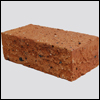

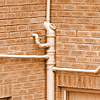

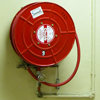


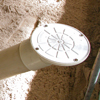
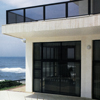
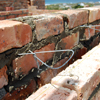
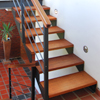
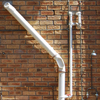


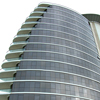
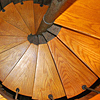
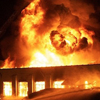
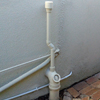

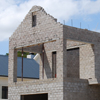

HI
MY NAME IS EDGAR FROM QWAQWA /MALUTI A PHOFUNG MUNICIPALITY(EASTERN FREE STATE.TELL IF THE INTERNAL HEIGHT OF A CHURCH IS 4000, MY CLIENT NEED AN ENGINEER FOR THAT HEIGHT.AND IF SO CAN YOU CODE FOR THAT ACT.
REGARDS
EDGAR BUTHELEZI
Edgar, we normally tell people to contact their municipality to check. Can your planning department not help you? If your client is building a church, he’s going to need to work with a competent person – and I assume that in this case an engineer WOULD be the best choice.
On a new house build, what are the requirements regarding what material should new window or door frames be made from. Is double glazing a new requirement.
SANS 10400 Part K, Walls mentions solid wood and “standard steel” door frames – but in the context of fixing in place. There are additional SANS that deal with some types of door and window frames, e.g. SANS 1129 Steel door frames; SANS 1553-1 & -2 that cover PVC-U. There are also ISOs that deal with the thermal performance of windows, doors and shutters – and frames. (ISO 10077). Aluminium is a popular material for frames, but I can’t find reference of a standard specific to frames. I can’t think of any material types.
I think there may also be some references in Part B, Structural Design – I don’t have access to a copy right now.
Part N, Glazing does not mention “double glazing”. It mentions the word “fenestration” once – cross referencing another standard: SANS 613, Fenestration products – Mechanical performance criteria. However there are several tables in the standard that specify the nominal glass thickness for different types of windows.
There is information about glazing in that section of this website. Have a look at some of the comments there – because I have made reference to the new sections of 10400 – viz. X and XA. – and there is some information about safety glass – where it needs to be used.
The word fenestration is defined in XA = “any glazed opening in a building envelope, including windows, doors and skylights”. And the standard states that fenestration products must comply with SANS 613.
Building envelope requirements are covered in XA under the heading Orientation.
“The building should be compact in plan, with the rooms that are used most and the major areas of glazing placed on the northern side of the building to allow solar heat to penetrate the glazing during the winter months.”
But it does not mention “double glazing” and the word “glass” does not appear in the standard!
Re: Garden / Tool Sheds – Building Regulations (Tshwane)
I need to determine whether it is a requirement to submit building plans for tool/garden sheds.
I own a portion of a sectional title property (duet) and the neighbour intends erecting a shed of approx 3m x 3m x 6m (w,h,d) next to the boundary wall between our properties (about 3m away from my living areas).
Does the owner need my written approval for such a construction? Can I legally stop the construction under the building regulations or sectional title act?
Thank you for assistance.
Louis it depends on the size of the shed. Also, as soon as you get into sectional title, the local authority has an out, because the body corporate has its own issues. Duet makes it even more complicated. As well, from what you say there are additional issues that include boundary walls. Please look further on this site and also on ownerbuilding.co.za and contact us again if you are still not sure of what to do.
Please also note that we are not specialists in sectional title property issues. So while we can give you pointers for the NBR, but we are not lawyers and do not give advice regarding the Sectional Title Act.
I bought a property in bramly with an empty land such as No: 56 & 57 in bramley. I want to register the empty land for commercial building, it is possible for me to build some blocks of two and one bed room apartments in the empty land. please let me know.
James it depends on the zoning of that area. Contact the local authority (City) for information.
Hi Penny,
Do wendy houses need to be on the plans. Ones with electricity and plumbing. In Joburg I look forward to your response.
Absolutely yes. And there is no question when electrics and plumbing is involved.
Hi Penny
We moved into our new home on the 1st December last year in Somerset West. The homes are developed by a property developer. After the house was completed I was informed of a 6 month snag list, where any prescribed latent defects would be repaired. Shortly after I handed my snag list to the developer the site foreman mentioned to me that according to the new building regulations it is now required of them to install thermal insulation in all the roofs of the new houses they build. What I want to know is when exactly this came into effect to be able to determine whether I can expect of them to install the required insulation.
Under the heading MINOR WORKS, this can be stretched very far, and could mean a complete house! I have a case in DORP where the building officer gives this as an excuse every time he’s caught not having asked for plans on illegal building works.
(g) the erection of any other building where the nature of the erection is such that in the opinion of the building control officer it is not necessary for the applicant to submit, with his application, plans prepared in full conformity with these regulations;
where could i find the latest parking requirements for H3, flats etc?
Cobis, The inclusion of in the building regulations is certainly not intended to extend to an entire building – though I can see how a crooked building control officer might try to bend the rules using this clause.
I can’t tell the extent of the illegal building works you refer to, but it might be a news story – in which case I suggest you contact your local newspaper.
Another issue to look at is whether the “illegal building works” comply with the National Building Regulations. The law states that:
“Minor building work shall comply with any National Building Regulations specified as a condition of the authorization granted by the building control officer.” You would have recourse if the building work doesn’t comply.
Cobis it depends where you are. If you are in Johannesburg, here’s a link to the City’s Town Planning Scheme document – 2011 – that covers parking requirements. If you are in Cape Town, have a look at the City’s Zoning Scheme Regulations. If you live elsewhere, contact your local authority.
Parking requirements are not covered in the National Building Regulations.
Thermal insulation is covered in SANS 10400-X & XA which was first published in 2011. So yes you can expect them to do this.
I have added some information about roofing from this part of SANS 10400. Here’s a link.
We have a cage storage area for high security goods. it have one entrance and a emergency fire door. Management want to build up the fire door to make the area more secure.
What does the standard state about emergency fire doors?
I would like to know if there is any indication what the ratio should be in a building for employees when it comes to toilet facillities for example for every 10 employes theier should be 1 or 2 toilets and 3 basins. Or can you have twenty employees sharing two toilets with two basins.
Hi Richard,
The regulations require a “rational design” done by a “competent person” as stated here:
SANS 10400-T:2011 “Edition 3The design of any automatic sprinkler system, fixed automatic fire-fighting system, pressurization of emergency routes and fire detection and alarm system that may be required, is a rational design(see 4.1.1(a)).
The assessment of building materials and components to determine their fire resistance is a rational assessment (see 4.55.1).
Regulation A19(1) requires the owner of the building to appoint and retain one or more approved competent persons to undertake responsibility for the work associated with rational designs and rational assessments performed in accordance with the requirements of this part of SANS 10400.
Accordingly, competent persons (fire engineering) and competent persons who design automatic sprinkler system, fixed automatic fire-fighting system, pressurization of emergency routes and fire detection and alarm system or assessment of building materials and components to determine their fire resistance shall be appointed in terms of Regulation A19.”
The list of materials and their fire resistance is too long to list here. The competent person will have all these and will be able to interpret them for you. I advise that you do this correctly as your insurance will more than likely need a COC.
Hi At,
Yes the regulations are very specific when it comes to plumbing and drainage. Your query is in Part P-Drainage of the SANS10400. In table 6 “Provision of sanitary fixtures for personnel” it says: up to 15 people: Males – 1 toilet pan, 1 urinal, 1 wash-hand basin; Females – 2 toilet pans, 1 wash-hand basin; up to 30 people: Males – 1 toilet pan, 2 urinals, 2 wash-hand basins; Females – 3 toilet pans, 2 wash-hand basins. This is the basic for the info you supplied, just be aware that each installation is different and may require more or less facilities depending on the “population” mix of male to female and what class of building the facilities are in. I hope this helps.
Please visit your local Building Development Management Office (1st Floor, Municipal Building, Corner Andries Pretorius and Victoria Street, Somerset West) to confirm whether exemption was granted from the specific regulation on the Approved Building Plan.
Am at a stadium to build a new house.
Have chosen a plot already with a view.
The builder tells me that the regulations are, that the bed rooms need to be north facing.
With our climate change, getting warmer why should the bedroom be north facing, if you want a cooler house /bedroom without installing air condition that consume additional electricity.
Oehl, this is what the new Energy Regulations, SANS 204 of 2011 state:
“Building orientation
Buildings should be orientated in accordance with figures B.1 to B.6, or approximately true north. If buildings cannot be thus orientated, they shall be orientated to achieve the lowest net energy use. Orientation sectors are shown in figure 1.
Living spaces should be arranged so that the rooms where people spend most of their hours are located on the northern side of the unit. Uninhabited rooms such as bathrooms and storerooms can be used to screen unwanted western sun or to prevent heat loss on the south facing façades. Living rooms should ideally be placed on the northern side.
The longer axis of the dwelling should be orientated so that it runs as near east/west as possible.”
However there are other factors that come into play including climatic zones which affect things like insulation, the types of walls to build (e.g. where cavity walls should be built). What this means is that the new regs take both heating and cooling into account.
I would to be forwarded the copy of the National Building Regulations Glossary on my email address.Thank you.
Hi Zukiswa, we do not forward any documents sorry.
Pl . advise about siphonic drainage system for industrial buildings, suppliers/providers with their addresses.
Hi BK, we do not have lists or recommend any one or an other supplier on this site. You will have to look in the Yellow Pages
What are the regulations governing the Mezzanine floor with regards to fire rating and staircase design? Are you required to obtain plans when building a Mezz floor? Which local authorities will be required to inspect this once it is built?
Treatment of external timber doors exposed to weather to ensure / prevent swelling of doors ?
There is nothing in the National Building Regulations that governs this. Go to your local hardware store and buy a good sealer. Rubbol is a particularly good one!
Yes Doc you do need plans for mezzanine floor. Your local authority will do the inspection. e.g. If you live in Pretoria it would be Tshwane, if you live in Cape Town it would be the City of Cape Town
I have moved into a house that i had bought through the bank 1 year ago.
I now decided to errect a work shop at the rear end of the house.
What should the distance be between my wall of the errected structure and the neighbours wall be.
if i have the option of not asking the neighbour to sighn and also if the nieghbour has to sighn .what should the distances be.
I also had the inspectors from pretoria here and they checked and informed me that the i have a car port and a lapa build over the servitude line,and that it has to be removed .Whos responsibility should this be as i,ve bought the house with structures already built.The car port and the lapa has allways been there for many years,now why should it be my resposibility to remove it.
What can be done.
Leslie your local authority has bylaws that specify allowable building lines from boundaries, so you will need to check with them. They are not all the same. You can download the Tshwane town planning scheme document here, there may be some other useful information in this.
As far as the illegal structures are concerned, as the owner of the property it is your responsibility to remove them. You could try and sue the previous owner for costs because that person did not divulge that they were illegal. But this will involve legal (and possibly court) action.
Please tell me what the legal distance is between a house and a sewage treatment plant. Also, if the plant must be inspected prior to operating and if it is allowed to flush untreated sewage into public roads.
Thankyou
Ann unfortunately I am not certain about this. The location of a sewage treatment plant in an urban area will be governed by zoning by-laws. It would definitely though need to be inspected before it operates – there are stringent plumbing regulations that relate to sewage and I have no doubt there are regulations that relate to sewage treatment plants. They also would definitely not be permitted to flush untreated sewage onto (you say into? – do you mean down drains?) public roads or into open drains. That would be a health hazard.
Hi
We moved into our new house two weeks ago, and discovered that our neighbours pool and fish pond pipes is “flushing” into my backyard. I am aware that you cannot stop storm water but for swimming pools what is the regulation for that?
Roellen the regulations regarding stormwater require an engineer to ensure that it is disposed of without undermining buildings etc. And a property owner cannot simply allow the water to drain onto a neighbour’s property. As far as swimming pool water is concerned, this is governed by local authority bylaws – specifically whether the water can be drained into the road and/or council stormwater drains. He/she cannot simply drain the water into your backyard. Contact the local authority for guidance on this issue.
Hi there
My neighbour living across a green zone (natural park, until she started demolishing parts of it for purposes of expanding her own garden) has recently erected very bright external lighting on the boundary wall and in her garden, “to limit crime in our area”. These lights are so bright I can read a book in my bedroom which is at least 30 meters away without additional lights being turned on in my bedroom. They are so bright that normal curtaining fails to darken the room, resulting in constant disturbance of sleep which has detrimentally impacted my health and that of my family. It has also disturbed the little bit of natural tranquility we still enjoyed from the park at night. The lights come on at dusk and remain at full brightness till the sun rises. Is there no regulation governing this type of intrusive behaviour, since common sense and regard for another’s wellbeing is seemingly beyond some people?
Good day.
I would like to build a grassroof lapa between 20 and 24 square metres, but dont know what all the regulations/rules are. Could you kindly furnish me with the regulations pertaining to distances, fire safety requirements, etc. Thanks in advance.
Regards.
Can one build a bathroom on wood floor?
Hi Anita, Yes you can. I self-built one of my houses with a wooden floor and had the ensuite bathroom on the wooden tongue-in-groove floor. What I had to do was to re-inforce (extra upright support beams) under the sections where the shower and the bath were. The floor of the shower was a concrete slab with the normal drain plug and the bath was a victorian cast iron bath so both of these were quite heavy. Today plastic and fibreglass units are much lighter. You must seal the timber extremly well so as to protect it from getting damp or letting any wet get through.
Hi Charles, The requirements for each city/town in SA differs and the local bye-laws and zoning regulations are different for each as well. You do not say where you are so we will not be able to tell you for your area. The best is to contact your local council planning department and give them your erf number and suburb and size of your plot and they will be able to tell you.
If you are saying that this “green zone” does not belong to her, then you need to report what she has done to the local authority (presuming they own the land) and object to what she has done.
Afternoon Jane, please advise where I can find information on building regulations for the Alberton, Johannesburg area? We are in the process of buying a property and I am not sure if the carport that is already there is within building regulations as it is about +/- 1m from the boundary wall? Do I have a right to ask the Seller for the plans for the house? Thank you
You have every right to ask the seller for the plans – you can also see if the local authority has copies (they should have). There is only one set of building regulations in SA – the National Building Regulations – although local by-laws also come into play, particularly when it comes to building lines. Your local authority should be able to give you info about by-laws.